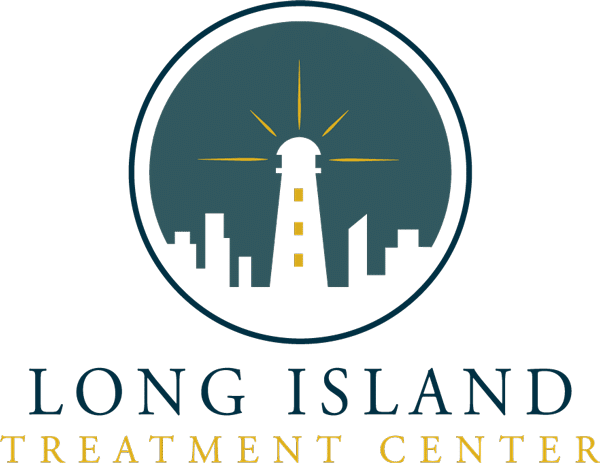When you begin treatment for drug and alcohol addiction, the first step of your treatment program is likely going to be detoxification. This is when your body rids itself of the harmful substances that it has become dependent on. It’s what most people imagine when they think about a drug and alcohol rehab program, and it is arguably what makes the treatment and recovery process so painful. Detoxing from a physically addictive substance can cause severe withdrawal symptoms. It’s these symptoms that make it so difficult to stop using most addictive substances.
In many cases, detox and withdrawal are managed in a clinical setting with a medical staff on hand at all times. This is known as inpatient detox, and it is often necessary to overcome an addiction to alcohol, opiates, and other addictive substances that can cause dangerous withdrawal symptoms. However, not everyone undergoing drug and alcohol addiction treatment will require inpatient detox. In some cases, patients will have the option for ambulatory withdrawal services. Ambulatory withdrawal services are available at Long Island Treatment Center, so let’s take a look at what they are so you can decide if they are right for you.
Table of Contents
What Are Ancillary Withdrawal Services?
Ancillary withdrawal services or ambulatory detoxification is essentially an outpatient detox program. Instead of spending three to 10 days in a treatment center, the patient is allowed to return to their home. They still may need to undergo treatment in their home or in an office, but they are allowed to spend the majority of their time at home providing that they are in a safe and supportive environment
Ambulatory withdrawal is an excellent option for professionals who need to be available for their jobs. There are certain criteria that must be met before someone is eligible for ambulatory withdrawal services, however:
- There can be no prior history of complicated detox
- There can be no history of complicated medical or psychiatric illness
- The recovery environment must be supportive
- Transportation must be available
- The patient must be willing and able to follow instructions
Ambulatory withdrawal can be a good option for patients who show mild to moderate signs of withdrawal during the detoxification process. This is often the case for patients undergoing treatment for cocaine or marijuana abuse. Cocaine withdrawal symptoms can be severe, but they don’t always require inpatient treatment. An outpatient treatment program may be enough for those who are going home to a safe and supportive environment. As for marijuana, studies have shown that it is physically and psychologically addictive when it is heavily used, but its withdrawal symptoms are not severe enough to require inpatient treatment. Some patients who are being treated for alcohol use disorder may also benefit from ambulatory withdrawal services if their withdrawal symptoms are mild enough, although heavy alcohol usage generally requires inpatient treatment.
The Ancillary Withdrawal Process
As with any drug and alcohol treatment program, the ambulatory withdrawal process begins with a comprehensive evaluation of the patient. An addiction-focused history is obtained, and a physical examination is completed by a physician or nurse practitioner. Once the assessment is complete, an individual treatment plan is developed for the patient based on their needs.
An ambulatory withdrawal program with or without extensive on-site monitoring. A program without extensive on-site monitoring allows a patient to receive treatment in their home or an office setting. Treatment sessions are given according to a set schedule by a trained medical staff, and the patient is allowed to live in their home and go about their lives within reason while they detox.
In an ambulatory withdrawal program with on-site monitoring, trained medical personnel are on hand to monitor the patient for several hours each day, either in the patient’s home or in an office. The patient is still allowed to stay in their home, but they are monitored much more closely, and medical personnel is on hand much of the time to administer medication and intervene when withdrawal symptoms become too severe.
As with inpatient detox programs, medications are often used to control withdrawal symptoms during ambulatory detoxification services. Anticonvulsants such as Gabapentin and valproic acid are used to prevent seizures associated with alcohol withdrawal and may reduce cravings for alcohol, while benzodiazepines such as Valium and Ativan can help manage anxiety symptoms. Methadone is also used in ambulatory services to help control opioid withdrawal symptoms and cravings. These medications are administered by trained medical personnel, and their use is closely monitored.

Benefits of Ancillary Withdrawal Services
The biggest benefit of ancillary withdrawal services is that they allow patients to more or less continue living their lives. They still need to undergo treatment, and fighting to overcome an addiction is difficult under any circumstances, but they can still continue to see their families and go to work or school with minimal disruption. They are usually in a more supportive environment, which may inspire them to stick with their programs and stay sober even when their withdrawal symptoms are at their worst.
Another major benefit of ambulatory withdrawal services is that they are often more affordable than inpatient treatment programs. Inpatient treatment programs can cost anywhere from $6,000 to $20,000 for a 30-day program, while outpatient programs cost around $5,000 to $10,000. The price varies from one program to the next, but ambulatory programs are much cheaper overall. This makes them far more accessible to patients with greater financial constraints. In fact, many private insurance companies prefer that patients access ambulatory services to treat substance use disorder because of the lower prices.
Challenges Associated with Ancillary Withdrawal Services
Despite the clear benefits of ambulatory withdrawal services, they aren’t without their drawbacks. For one, they aren’t for everyone. Some patients suffering from substance use disorder need to be under constant medical supervision if they are facing life-threatening withdrawal symptoms, something that they won’t have in an outpatient setting.
A successful outpatient program also requires patients to be in a supportive environment. As much as people would like to think about their homes being supportive environments, that isn’t always the case. If a patient comes from an unsupportive, abusive, or otherwise unhappy home, an ambulatory withdrawal program is not the best solution for them. This may also be the case if an outpatient program would cause them to be around friends who might encourage them to keep using drugs and alcohol. Addiction treatment is more than just detoxing and allowing an addictive substance to leave one’s body; it means changing behavior patterns and confronting the psychological and environmental factors that led to a patient abusing drugs and alcohol in the first place. Again, that isn’t always possible in an outpatient setting.
Finding Ancillary Withdrawal Services Near You
If you or someone you know is struggling with drugs and alcohol, there is always help available. Ancillary withdrawal services may not be for everyone, but they can be incredibly helpful for the right patients. To find out if ambulatory withdrawal services are right for you, contact Long Island Treatment Center today to begin a phone assessment and determine if you meet the criteria for an outpatient treatment program. Even if you do not meet all the criteria or if your insurance plan won’t cover such a program, there are always other options available.
Contact Long Island Treatment Center today to learn more about the programs that we have to offer. Our staff is available 24 hours a day to assist you and answer any questions that you may have.
FAQ
What is ancillary services in addiction treatment?

